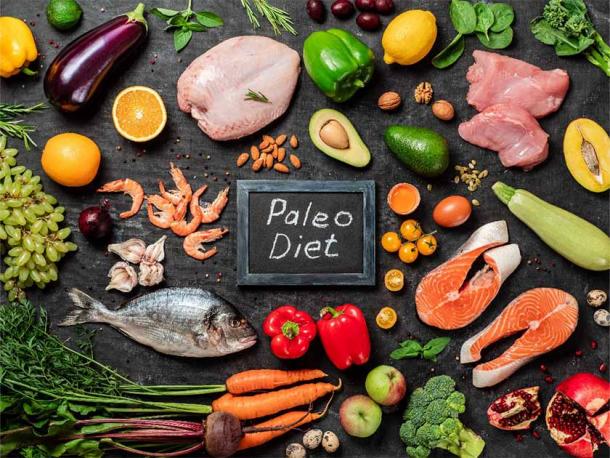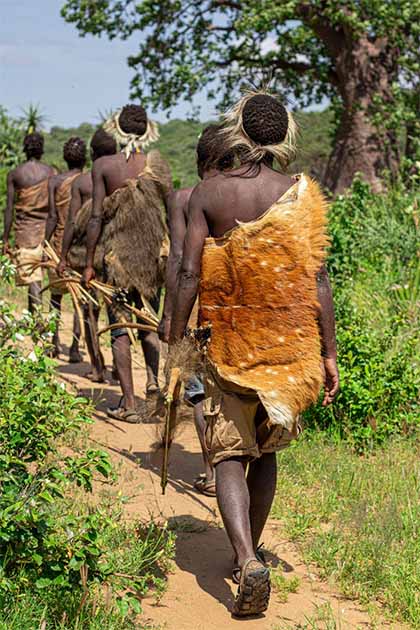Three Ancient Diets That Are Still Popular Today
There is no denying that the weight loss and diet industry in the Western world is huge. For many people, inspiration comes from our very early ancestors, who are believed to have eaten a simple, healthy diet.
Because ancient people did not have access to the amount of processed and therefore unhealthy food that we do, people tend to assume that they were healthier than we are today. Furthermore, many hunter-gatherers lived extremely active lifestyles, often out hunting and foraging for food for long hours, meaning they burned a considerable amount of calories.
So how have people adapted ancient eating habits to modern diets, and how do these modern diets shape up when compared to the eating habits of our ancestors?
1. Paleo: The Ancient Stone Age Diet?
The most obvious place to begin, and perhaps the diet that comes to most people's mind when the words ‘ancient diet’ is mentioned, is the paleo diet. Although this diet has been around for centuries, it has recently gained traction thanks to the internet and social media, where it is talked about a lot.
People who subscribe to the logic behind paleo dieting think that the way humans in the hunter-gatherer period ate is the ultimate form of diet. Therefore, people who eat a paleo diet cut out all processed foods.
People who follow the paleo diet argue that we share the same bodies as our ancestors, but we are now packing it full of artificial and processed food - something our ancestors did not have access to, and therefore, our body is not built for.
They believe that humans have actually evolved to eat how people did in the Paleolithic period about 2.6 million years ago. This was just at the beginning of the agricultural revolution when farm animals began to be used for meat and dairy. They go on to argue that our body has not had enough time to adapt to this different, agricultural way of eating and that instead, we should be eating like our Paleolithic ancestors.
In his book The Paleo Diet: Lose Weight and Get Healthy by Eating the Foods You Were Designed to Eat, Loren Cordain stated that this Stone Age diet “is the only diet that ideally fits our genetic makeup.”
From his research of the diets of hunter-gathers, Cordain came to the conclusion that 73% of these societies gained half of their calories from meat. He advocates that people eat lots of lean meat and fish, but cut out dairy, beans, or cereal grains.
The latter foods are eliminated because they were introduced after the invention of cooking and agriculture, which is the cut-off point for Cordain. He argues that after this point, we began to eat food that was not designed for our bodies as we manipulated it with cooking. Cordain, and those who support his arguments, go as far as to argue that the paleo diet can limit risks of health conditions like cancer, heart disease, diabetes, high blood pressure, and acne.
- Study Dispels Human Meat Diet Hypothesis, Changing Evolutionary Story
- Is the Paleo Movement Genetically Out of Sync with Modern Humans?

The modern paleo diet is very meat-heavy, but scholars believe our Paleolithic ancestors had a more varied diet. (fascinadora / Adobe Stock)
How Historically Accurate is Paleo?
As the paleo diet has gained the attention of people wanting to lose weight, it has also gained the attention of professionals. Many of these professionals have questioned the validity of the paleo dieting claims that our ancestors relied so heavily on meat and meat alone.
Paleontologists have gathered evidence about the hunter-gatherer diet through fossils of teeth, which allow them to uncover what our ancestors ate. Furthermore, anthropologists have done a lot of work by looking at hunter-gatherer tribes that still exist today and have observed their eating habits.
Many of these scholars have come to the conclusion that the case is not as black and white as Cordain and others who agree with the paleo diet would have us believe. While many of these scholars agree that meat has played an integral part in the diet of many ancient and later civilizations, they also argue that it was not the only component of ancient diets. In fact, no one element can be picked out as most important because they all worked in conjunction with each other to form a balanced diet.
In fact, people in the Paleolithic period would have consumed around 30% of their annual calories from animals, but there would be periods where they scarcely got any meat at all, and they were forced to rely on other sources of nutrition.
Anthropologists who have studied hunter-gatherers today have shown that they often have very little success as hunters. It was found that the Hadza and Kung people of Africa fail to obtain meat more than half the time they went hunting. Given that they now hunt with modern weapons, this would suggest it was even harder for our ancestors.
So, what did our ancestors rely on? Well, as Ann Gibbons very eloquently wrote in her article for National Geographic, “man the hunter is backed up by woman the forager.” The Hadza, for example, get 70% of their calories from plants.
- 170,000-Year-Old Human Diet Contained Roast Vegetables
- Mediterranean Cultures Imported Asian Exotic Foods Before 1700 BC

When our ancestors’ hunts failed, as they frequently did, ancient diets were supplement by foraging edible greens, nuts, berries, mushrooms, and more. The Hadza of present-day Tanzania, seen here leaving on a hunt, are one of the last nomadic hunter-gatherer tribes, and their diet is 70% plants. (David Bokuchava / Adobe Stock)
2. Keto: Ancient Diet for Health… and Epilepsy
Another extremely popular modern diet that actually has historical routes is the keto diet. Its inspiration is slightly later than the paleo diet, but it remains historical nonetheless.
A treatment similar to the keto diet was used from at least 500 BC, and then again in the 1920s, as a cure for epilepsy. Historians have argued that the fasting methods used, and some aspects of food intake resemble the modern keto diet.
The use of fasting in curing epilepsy was mentioned by the ancient Greek Hippocrates (who would become the ‘Father of Medicine’) in his work, On the Sacred Disease. In it, he described how changes to the diet could have an effect on epilepsy.
The method was used again in the early 20th century for two decades before anti-epileptic drug treatment was developed. However, the diet was reintroduced to patients that the new medication did not work for, most of which were children.
The diet was popularized in this period by two American men named Bernarr MacFadden and Hugh Conklin. According to Dr. Ananya Mandal, Conklin argued that:
“epileptic seizures were caused by a toxin secreted in the intestine and suggested that fasting for 18 to 25 days could cause the toxin to dissipate”
Shockingly, Conklin proceeded to put many of his patients on a water diet in order to promote the process. He reported that in children, 90% of cases were cured, as well as 50% of cases in adults.
The keto diet revolves around eating as few carbohydrates as possible, with a high intake of good, healthy fats. The aim of doing so is to trick one's body into what’s called a state of ketosis - a kind of metabolic state. During ketosis, the liver produces ketones. Ketones will burn the fat from fat reserves on our body, instead of producing insulin and glucose like the body usually does in order to burn carbohydrates.
In essence, the aim is to force the body into using a different kind of fuel. Because there are few to no carbohydrates, the body cannot rely on the production of insulin and glucose to obtain energy, and so begins to eat into fat stores to get what it needs.
This ultimately means fat is burnt and then lost; our body is tricked into starvation mode, without the actual starvation. This is the pretty standard version of the diet; however, it varies depending on who you discuss it with and what they aim to target.

The keto diet is a low-carb, high-fat diet that focuses on converting fat into fuel and entering ketosis, where you burn that fat as your primary energy source. This ancient diet dates back to at least 500 BC (vaaseenaa / Adobe Stock)
3. The Mediterranean Diet: Heart-Healthy Ancient Diet
Another less well-known but historical diet is the Mediterranean diet. Unlike paleo or keto, which emphasize the restriction of many foods, this diet often encourages people to eat lots of fruits and vegetables, as well as nuts, olive oil, whole grains, and bread.
As the name would imply, the diet originates in the eating habits of people from countries like Italy and Greece. The diet promotes the consumption of healthy fats, the replacement of salt with herbs and spices, and a reduction of red meat intake to just three times a month, but plenty of fish and poultry. It also advocates for low-fat dairy like Greek yogurt.
It is thought that this type of diet has been around in these regions for centuries, with roots all the way back to ancient Roman traditions which were modeled on the even older Greek traditions. In the ancient Mediterranean culture, wine, bread, and oil products had become symbols of rural culture and agriculture.
Being close to the sea, the rich were able to eat a lot of fish and had little reliance on animal meat. They favored sheep cheese, vegetables, and other forms of seafood, like oysters. The Romans, for example, had access to vegetables like onions, leeks, cabbage, lettuce, carrots, and turnips.
The diet was shaped further, in the 8th century AD, when the Moors occupied the Spanish peninsula. They brought with them rice, lemons, eggplants, and spices like saffron. These ingredients became incorporated into the everyday lives of the Mediterranean people.

The Mediterranean diet promotes healthy fats, herbs and spices, as well as fish and poultry. This ancient diet may have varied by country and economic class (G Steph Rocket / CC BY SA 4.0)
However, while we can see a general trend in the food eaten in this period, in this region it is important not to generalize. The Mediterranean Sea borders 18 countries, each of which is different; they all have different cultures, climates, and people. They were also characterized by different economic climates and public health measures. We therefore cannot assume that everyone in these large areas subscribed to and ate exclusively from the Mediterranean diet. Rather, their diet was made up of some of the most popular, easily accessible elements.
The Mediterranean diet was made popular in modern times by Ancel Keys and Flaminio Fidanza, who studied seven Mediterranean countries. The contemporary idea of the Mediterranean diet is based on their findings from the eating patterns of people in Italy and Greece in the 1950s and 1960s.
They found that in the 1960s, the Greek diet was high in olive oil and fruit, the Dalmatian diet was high in fish, and the Italian diet in vegetables. The countries had low mortality rates as a consequence of heart disease which only emphasized, to these scholars, the success and benefits of this diet.
Conclusion
In conclusion, although many of us do not realize it, several of our modern diets have ancient roots. While the desire for weight loss and health is considered a modern issue, no doubt perpetuated by social media, the inspiration for many of the diets we attempt is not so modern.
For some, looking to the extreme past for dietary recommendations becomes blinding and overwhelming as they lose sight of how people truly lived. The modern emphasis on meat in our early ancestors' lives certainly seems to have become exaggerated.
It is, therefore, an extremely complicated endeavor to figure out the best way to eat and remain healthy, particularly when one considers our ancestors, who lived an entirely different lifestyle than we do today.
Top Image: The modern paleo diet is also called the caveman diet, as it’s inspired by Paleolithic eating habits. But is this meat-heavy depiction of ancient diets accurate? Source: Gorodenkoff / Adobe Stock
By Molly Dowdeswell
References
Altomare, R., et al. May 1, 2013. The Mediterranean Diet: A History of Health. National Library of Medicine. Available at: https://www.ncbi.nlm.nih.gov/pmc/articles/PMC3684452/#
Colbin, A. September 26, 2017. True to Our Roots: Traditional and Ancient Diets. Institute of Culinary Education. Available at: https://ice.edu/blog/traditional-and-ancient-diets
Flam, L. July 22, 2015. For your health, should you try paleo or Mediterranean diet? Today. Available at: https://www.today.com/health/weight-loss-should-you-try-paleo-or-mediterranean-diet-t33746
Gibbons, A. February 2013. The Evolution of Diet. National Geographic. Available at: https://www.nationalgeographic.com/foodfeatures/evolution-of-diet/
Heffernan, C. April 2, 2018. Guest Post: Four Ancient Diets that Work Even Today. Physical Culture Study. Available at: https://physicalculturestudy.com/2018/04/02/guest-post-four-ancient-diets-that-work-even-today/
Mandala, A. February 26, 2019. History of the Ketogenic Diet. Medical & Life Sciences. Available at: https://www.news-medical.net/health/History-of-the-Ketogenic-Diet.aspx
Wheless, J. November 2008. History of the Ketogenic Diet. National Library of Medicine. Available at: https://pubmed.ncbi.nlm.nih.gov/19049574/#:~:text=To%20mimic%20the%20metabolism%20of,treatment%20its%20use%20declined%20dramatically




















Comments
"the rich were able to eat a lot of fish and had little reliance on animal meat." Fish happens to be animal also.
The article has left out an ancient diet that is that fastest growing trend in the entire world.
Raw, vegan.
You could survive for a while on bread alone, maybe forever. Do we just need our ‘daily bread’ of the beggar’s prayer that Jesus taught, as we forgive and are forgiven of any wandering trespassing. Or when it becomes beer, after being drenched with water and the airborne yeast? You have the carbs/sugars, the gluten/proteins (gluten being the MOST CONCENTRATED source of edible protein – higher than fish), the salt/minerals, fruit-hops for vitamin C, and of course that great YEAST and all its wonderful by-products, which may be a critical overlooked nutritional component. But what is most critical is that we like the taste, because we went only by that back then, ...back BEFORE we were fooled by it.
Nobody gets paid to tell the truth.